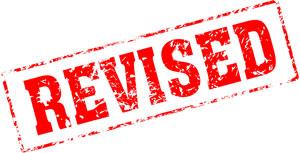Roberta Fricker considers herself a "new nerd." After working as an analyst in insurance giant Aetna's Seattle office, she decided she wanted to learn more coding. So, she quit. After dabbling with SQL server, she took an ASP .NET course and found her home. "That’s when I decided I wanted to become a programmer," she says. Last year, Roberta graduated from Santa Barbara City College with a certificate in computer science. Hence her self-awarded title of "new nerd." Even while she looks for work, she codes every day to keep her skills up. She's created a mock advertisement using Flash and has built her website using HTML 4.01, XHTML, CSS 2.1 and Adobe Photoshop. Still, despite her certificate and these projects, her job search has been challenging. "The first thing I did was approach people I knew," Roberta says. "I also tried LinkedIn and sent a bunch of emails with zero results. I tried cold-calling recruiters, but they said I needed at least six months of professional experience. I also thought the screening software companies use could be holding up my resume, so I tried tweaking it." To help out, we paired Roberta with a hiring manager, an internal recruiter and an external recruiter to get their suggestions on how to improve her resume. It's part of our ongoing Resume Makeover series, which pairs job seekers with recruiters and hiring managers to get real-world feedback. We begin this week's three-part series with Robert Watson, a senior IT recruiter for consulting and IT services firm International Solutions Group, based Herndon, Va. He spoke to Roberta by video conference. Our full series on Roberta''s resume critique:
- Part I: Robert Watson, Senior Recruiter, International Solutions Group
- Part II: Erik Wieland, IT Services Director, UCSF Department of Medicine
- Part III: Rita Gordon, Corporate Recruiting Manager, Electronics Arts
The Big Picture
Watson's first suggestion was that Roberta make clear her initiative and passion for programming. "Rather than whining about the economy and how it's preventing you from getting a job, you're actually still coding and extending what you know," he observed. "You're a self-learner and employers like that." In terms of the resume's layout, he saw her listing of "Key Accomplishments" under each employer as a good strategic design. When it comes to submitting her resume, he suggests sending it as a PDF, rather than a Word document. That way she won't risk having its format screwed up because of incompatibilities with any resume scanning programs an employer might use.
The Nitty Gritty
Here's a deep dive on Roberta's resume: 1: Put your contact information into the header, rather than the body of the resume. It'll increase the room you have for additional information on the resume. 2: Eliminate "1 of 2" pages. On the second page, move "2 of 2" to the bottom. 3a, 3b: Remove the words "email" and "Web site." 4: I like the layout and use of consistent fonts. 5: Move dates to far right and also explain what you've been doing between Feb. 2010 to present. Watson also suggested that Roberta note that she's worked on personal coding projects, and explain what they do and why she selected them. 6: Spacing between the first bullet point and the headings are inconsistent. "You should pick one font and, at most, pick two font sizes," said Watson. "You can also use bold or spacing to create a sense of separation."
Roberta's Takeaways
To Roberta, the most significant change to make is to more clearly describe what she's been doing since she got her certificate. "I need to explain whether I was laying on the beach, or continuing my development," she says. "Robert suggested I mention my projects in an interview, because they may have missed it on my resume." Come back Wednesday, when Erik Wieland, director of IT services for the University of California San Francisco’s Department of Medicine weighs in. On Friday, Roberta hears from Rita Gordon, corporate talent acquisition manager at Electronic Arts.


